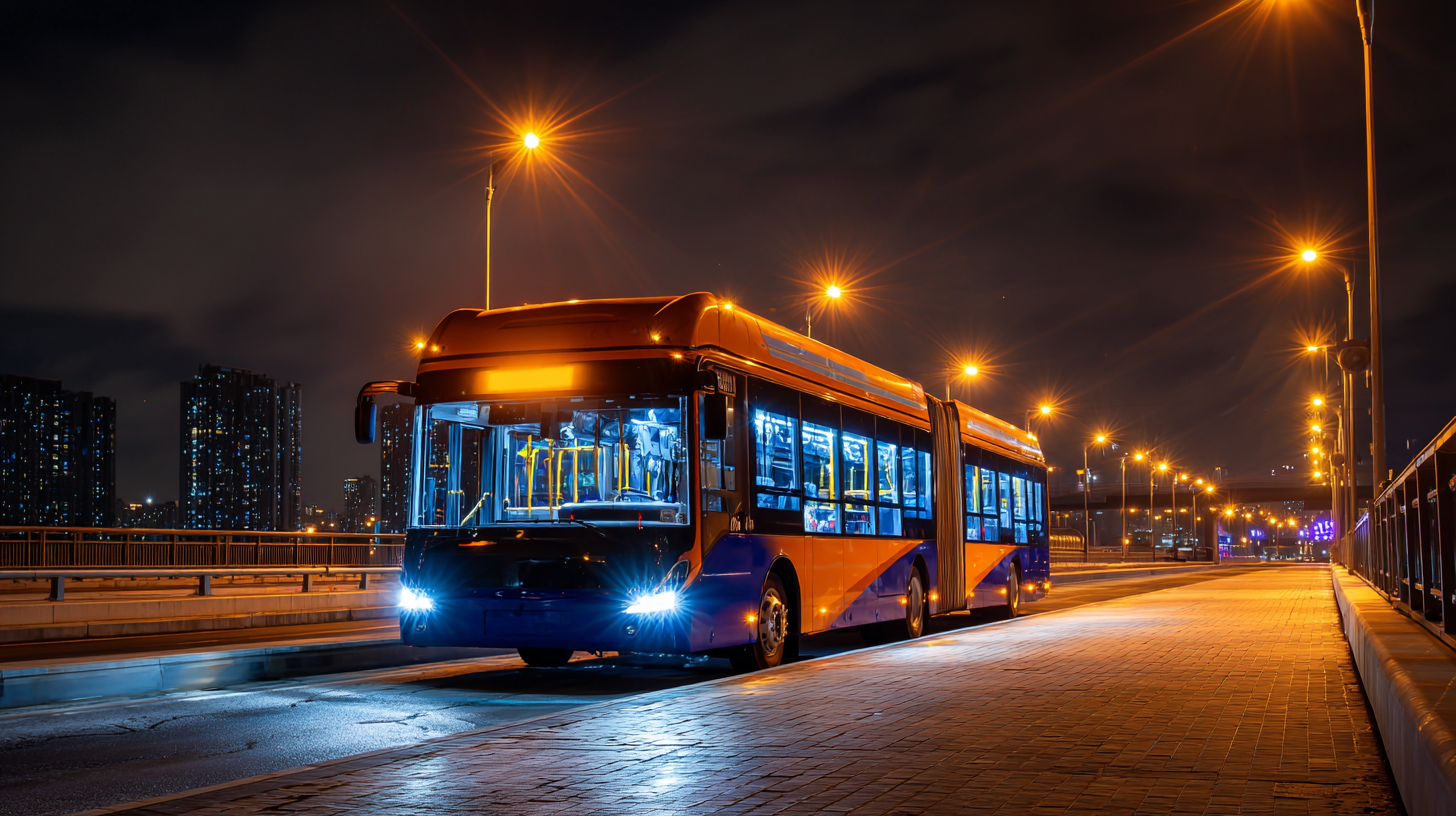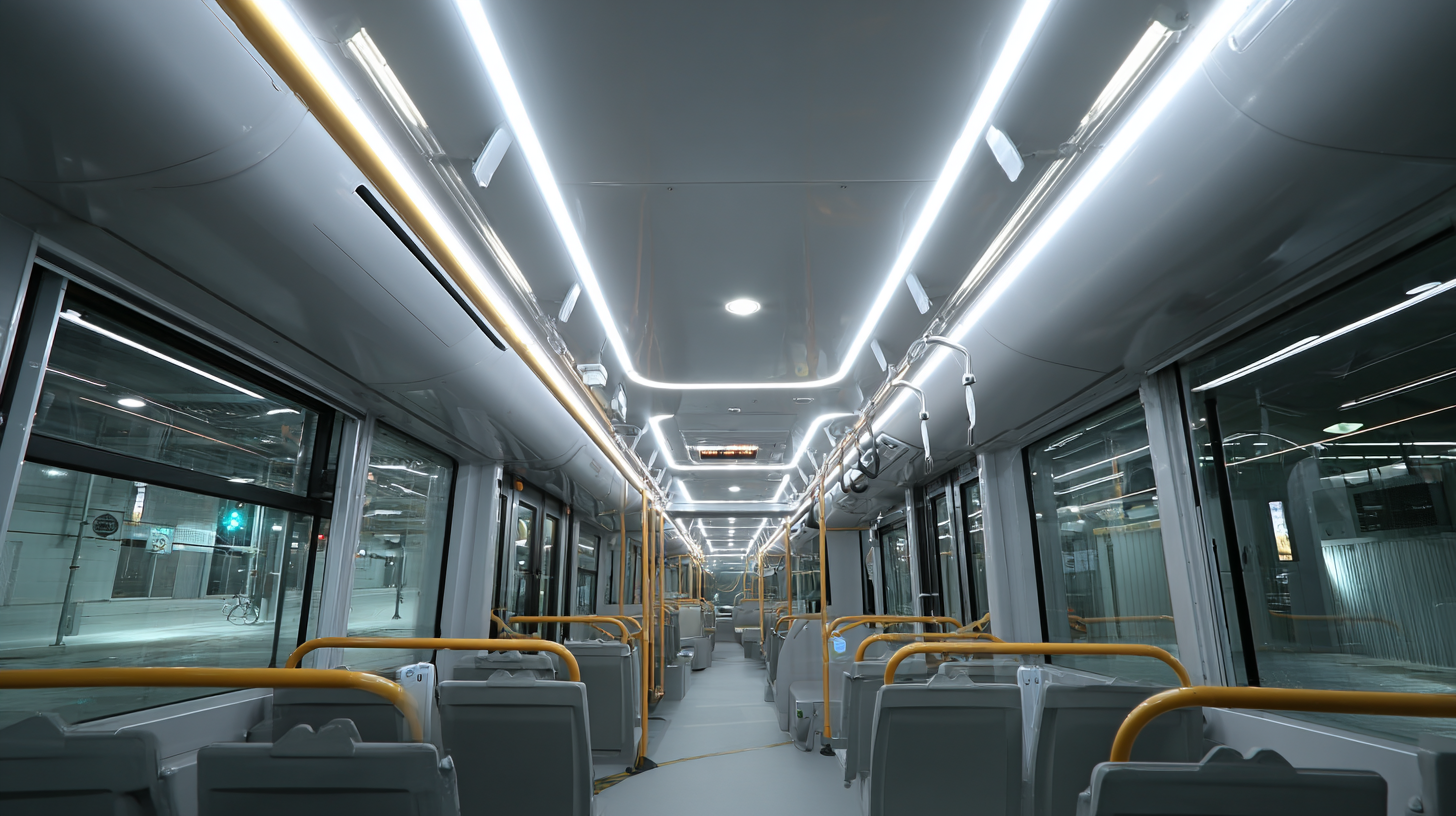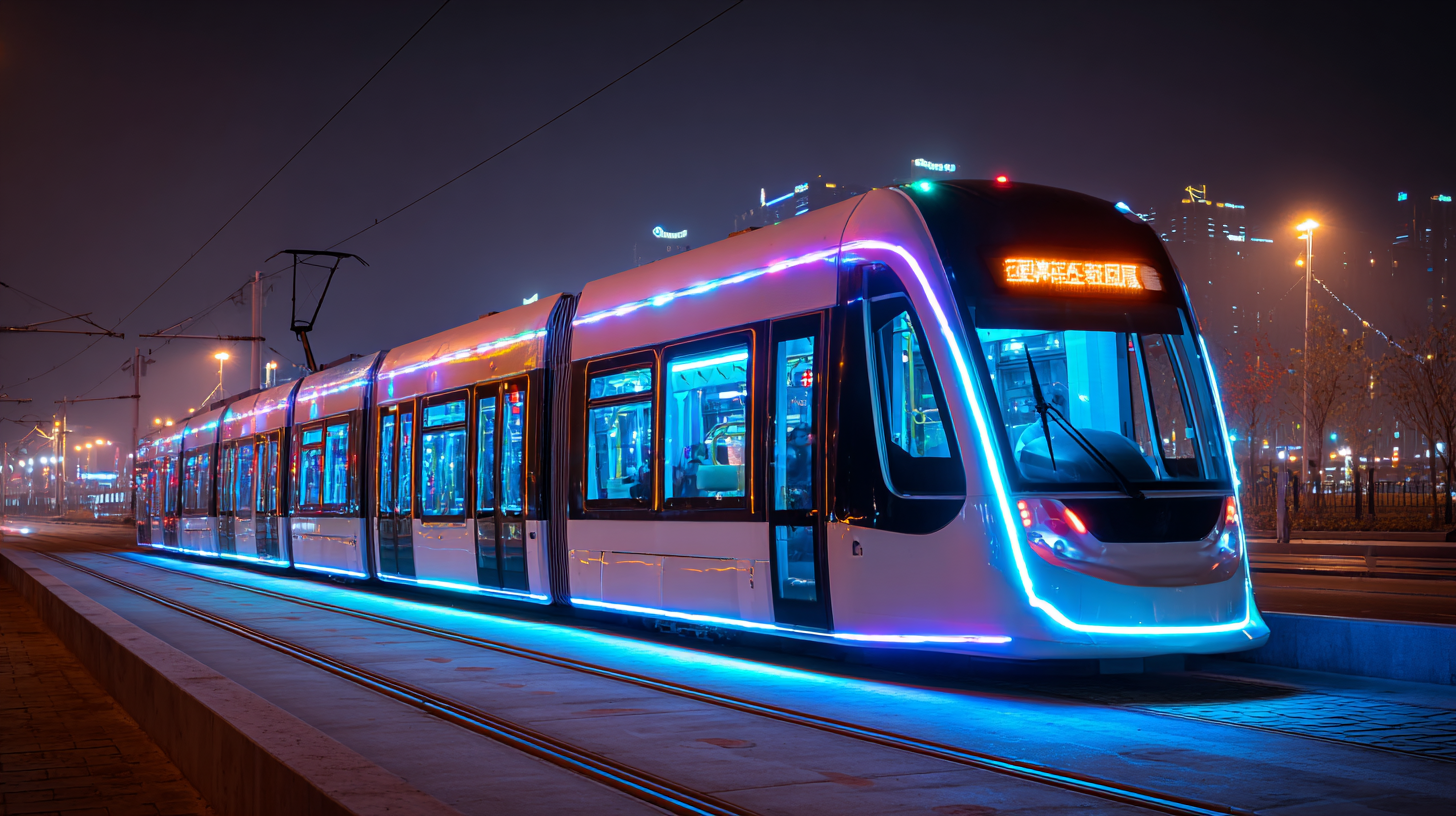Leave Your Message
-
Phone
-
E-mail
-
Whatsapp
-
Whatsapp


In the realm of modern transportation infrastructure, effective Busway Lighting solutions play a crucial role in ensuring safety and efficiency across various applications. According to the Illuminating Engineering Society (IES), nearly 85% of public transportation authorities emphasize the importance of adequate lighting in busway systems to enhance visibility and reduce accident rates. Furthermore, a recent market analysis by ResearchAndMarkets reveals that the global demand for smart lighting solutions in public transport is expected to grow at a CAGR of 12.3% by 2027, driven by advancements in LED technology and increasing urbanization. This blog will explore the best Busway Lighting solutions tailored for diverse applications, guiding stakeholders in choosing the most suitable options to promote safety, sustainability, and operational efficiency in their respective environments.

Proper busway lighting is critical for ensuring safety and efficiency in transit systems, especially in Bus Rapid Transit (BRT) systems that prioritize user experience and accessibility. According to the International Association of Public Transport, well-lit stations and transit corridors can reduce crime rates by up to 20%, significantly improving rider perception of safety. Moreover, adequate lighting helps drivers and pedestrians navigate busy bus routes effectively, minimizing the risk of accidents.
When selecting busway lighting solutions, consider factors such as brightness, energy efficiency, and maintenance costs. LED lighting, for instance, offers longer lifespans and reduced energy usage compared to traditional options, making it a cost-effective choice over time. Additionally, it's essential to conduct regular audits of lighting installations to ensure optimal performance, as poorly lit areas can threaten both transit efficiency and passenger safety.
**Tips:** Always opt for lighting that provides uniform illumination to eliminate shadows and dark spots. Employ smart lighting that adjusts based on real-time conditions to enhance energy savings and safety. Lastly, integrate signage with lighting to guide commuters effectively, creating a welcoming and secure transit environment.
When selecting busway lighting solutions, several key considerations play a crucial role in ensuring effectiveness across diverse applications. First and foremost, the type of light source should be evaluated. LED lighting, for instance, has garnered popularity due to its energy efficiency, longevity, and low maintenance costs, making it a practical choice for public transportation systems striving for sustainability. Additionally, the intensity and distribution of light need to be considered to enhance visibility and safety for passengers and operators alike, particularly in high-traffic areas or during nighttime operations.
Moreover, the integration of smart technology into busway lighting can further improve functionality. Features such as adaptive lighting systems, which adjust brightness based on real-time traffic conditions, not only contribute to energy savings but also respond effectively to changing environments. When choosing the right lighting solutions, it is essential to assess the specific needs of the transport system, including the expected passenger volume, layout, and safety requirements. Ultimately, a thoughtful approach to these considerations will lead to the development of lighting solutions that not only enhance operational efficiency but also promote a safer and more welcoming environment for public transport users.
| Application | Lighting Type | Lumens Output | Energy Consumption (W) | Color Temperature (K) | Key Considerations |
|---|---|---|---|---|---|
| Public Transport Terminals | LED Floodlights | 12,000 | 150 | 5000 | High at traffic zones, low maintenance |
| Bus Stations | LED Track Lights | 8,000 | 100 | 4000 | Adjustable light direction, energy efficient |
| Bus Stops | Solar LED Lights | 6000 | 75 | 3000 | Eco-friendly, requires sunlight exposure |
| Bus Depots | LED High Bay Lights | 15,000 | 200 | 5000 | Wide coverage, durable for indoor environments |
When it comes to lighting solutions for busways, a key consideration is the choice between LED and traditional lighting options. LED lighting has gained popularity due to its energy efficiency and longevity. These lights consume significantly less energy compared to traditional incandescent or fluorescent bulbs, resulting in lower operational costs over time. Moreover, LEDs offer a lifespan that can exceed 25,000 hours, greatly reducing maintenance frequency and costs associated with bulb replacements. This makes them an ideal choice for busways, which require consistent and reliable illumination.
On the other hand, traditional lighting, while often cheaper upfront, can lead to higher expenses in the long run. Incandescent bulbs, for example, typically last only about 1,000 hours and have higher energy consumption rates. Additionally, they produce a warmer light that some may prefer for aesthetic reasons. However, when considering the overall efficiency, sustainability, and the environmental impact, LED lights emerge as a superior option for modern busways. By choosing the right lighting type, cities can enhance safety and visibility while contributing to energy conservation efforts.
Effective busway lighting is critical for enhancing passenger perception and ensuring security within transit systems. Studies indicate that adequate light levels can significantly impact how safe and comfortable passengers feel. According to a report by the Illuminating Engineering Society, increasing light levels by just 30% in busway areas can lead to a 25% increase in perceived safety among commuters. This is imperative, especially during nighttime operations when darker environments can lead to heightened anxiety and discomfort.
When selecting lighting solutions, it’s essential to consider both the intensity and quality of light. LED lights are often preferred due to their energy efficiency and long lifespan. Additionally, warmer color temperatures have been found to create a more inviting atmosphere, which in turn influences passenger behavior positively. A study from the Transportation Research Board suggests that well-lit transit areas encourage higher ridership rates, as passengers feel more at ease using the services.
**Tips for Choosing Busway Lighting:**
- Assess the specific needs of your busway environment, taking into account peak usage times and natural light availability.
- Choose lighting that minimizes glare while maximally illuminating pathways and seating areas.
- Regularly review and maintain lighting conditions to adapt to changing passenger needs and technological advancements in lighting.

When designing busway lighting, adhering to regulatory standards and best practices is crucial for safety and efficiency. The Illuminating Engineering Society (IES) recommends specific lighting levels; for instance, a minimum of 10 foot-candles is required in bus stations to ensure adequate visibility for both passengers and operators. Furthermore, the National Fire Protection Association (NFPA) underscores the importance of emergency lighting systems, suggesting that these systems provide at least 1 foot-candle in evacuation routes and areas of refuge to enhance safety during emergencies.

Additionally, the integration of smart lighting technology is becoming increasingly important in busway design. According to a recent report by the International Energy Agency (IEA), smart lighting solutions can reduce energy consumption by up to 40% when integrated with motion sensors and adaptive lighting controls. This not only aligns with sustainability goals but also complies with stringent regulatory measures aimed at minimizing energy use. Thus, choosing busway lighting solutions that meet or exceed these standards helps ensure compliance with regulations while also promoting a safer and more efficient transit environment.
